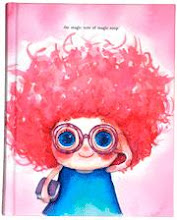
love struck , La’Brooy, Melanie
Chick lit always received a sideways glance of fluffy-content contempt from the acquisitionist. My disdain for candy-pink covers and frangipani bath bliss was unsettled when a friend convinced me to pick up Melanie La’Brooy’s love struck. Deliciously saccharine, the ‘busy’ cover belies the adroit humour and sassy intellect of the main character, Isabelle Beckett, and her romantic adventures.
Isabelle Beckett, as her namesake suggests, continues a tradition of chivalric romance, lusting for an ideal. Similarly, her best friends Fran and Zoe (think Salinger and the Glass legacy of intellectual ennui and analytical astuteness) are romantic wrecks. Combine 19th century romantic expectations with the cynicism of Salinger, and the reader is set for a trip of courtship chaos.
With a penchant for literary types, Isabelle is constantly disappointed. Musing on her ideal she wonders:
‘It’s odd what we’re attracted to, isn’t it? I mused. ‘I mean all a boy has to do to impress me is to be well-read or have stories to tell- and I mean proper stories – and I’ll instantly attribute all these wonderful qualities to him that don’t necessarily have anything to do with him. He could be a lying, cheating, tofu-eating freak for all that I know but I’ll fall for him just because he’s read Anna Karenina.
Defending this ideal, her singledom, her job at an art auction house, and her tutu-wearing tendencies becomes Isabelle’s challenge. Isabelle deals with the craziness of her life as she confronts Sydneysiders, taxi drivers, spiders, the world and importantly herself in order to regain control. If you are after something highly funny, pick up a copy of love struck but don’t be surprised if you embarrass yourself with snorts of laughter on your daily commute.
I am surprised at how preconceptions are dispelled, dismantled and left on the verge when I actually begin to read a book. Intimidating classics, like Eliot’s Mill On the Floss which I recently read for my Victorian lit course are surprisingly enjoyable. Has anyone else been pleasantly surprised when venturing outside of their typical material?

